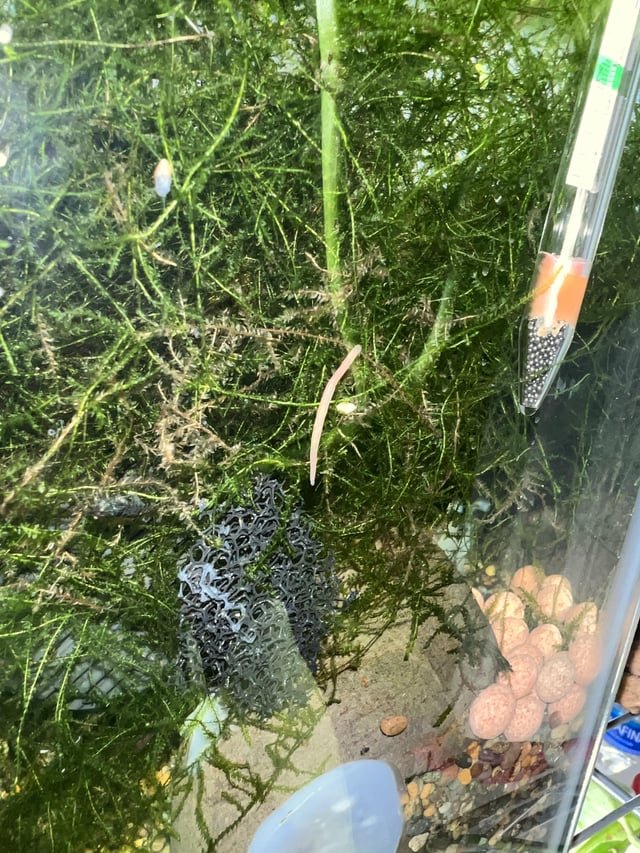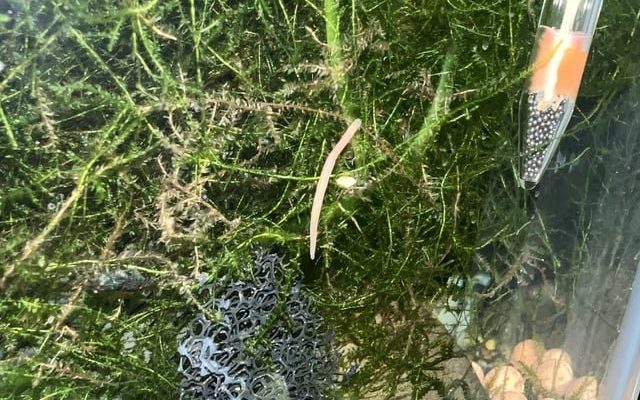
Now, you might be thinking, “How do I even know if there are worms in my tank?” That’s where innovative aquarium gear comes into play. Brands like Eheim and Fluval have developed tools and gadgets that can detect these elusive critters, helping you ensure your tank remains healthy. Let’s dive into the world of aquarium gear that spotlights hidden worm activity, shall we?
Why Detecting Worm Activity is Important
Honestly, detecting worm activity isn’t just about curiosity. Worms, like detritus worms, can indicate how well your tank is functioning. If you have a lot of them, it might signal overfeeding or poor water quality. In moderation, however, they can help break down waste, so understanding their presence is crucial. Think of them like the unsung heroes of your tank—working tirelessly behind the scenes.
If you start noticing an overpopulation of worms, it’s time for some troubleshooting. You could be facing issues such as high nutrient levels or improper tank conditions. Detecting worm activity early can prevent more significant problems down the line. After all, wouldn’t you want to know if something’s brewing below the surface before it escalates?
Types of Aquarium Gear for Detecting Worms
There are several types of aquarium gear designed specifically to help you monitor hidden worm activity. Here’s a breakdown of some popular options you might consider:
- Substrate Testers: These tools allow you to take samples from the substrate without disturbing the entire tank. They can reveal the presence of worms and other organisms.
- Water Quality Test Kits: While they don’t detect worms directly, testing for ammonia, nitrites, and nitrates can help indicate if your conditions are favorable for worm growth.
- Aquarium Cameras: These nifty devices can be placed underwater to give you a live feed of what’s happening below the surface, including any worm action.
- Magnifying Glasses: A straightforward but effective tool, perfect for a close-up look at your substrate and the critters living in it.
Each of these tools has its own strengths. Substrate testers, for instance, let you dig into the nitty-gritty without causing chaos in your tank. This way, you can monitor conditions over time and respond accordingly.
How to Use Substrate Testers
Using a substrate tester might sound complicated, but it’s quite simple! Follow these steps to get started:
1. Select the Right Tool: Choose a substrate tester that suits your aquarium size. Brands like Eheim have models designed for both small and large tanks.
2. Insert Carefully: Gently insert the tester into the substrate at several points in your tank. Avoid stirring things up too much—think of it like digging for treasure!
3. Observe: After inserting, wait a moment to see what comes up. You may notice not just worms but also other critters that could be part of your ecosystem.
4. Analyze: Check the sample closely. You might be surprised to see how many worms are residing in your tank.
It’s truly fascinating to see what’s going on in your aquarium that you can’t see with the naked eye. Plus, it gives you a chance to take action if necessary, helping you keep everything balanced.
Water Quality Test Kits and Their Role
While substrate testers hone in on worms, water quality test kits play a broader role. They help create an environment that either encourages or discourages worm growth. Here’s why they matter:
– Balancing Nutrients: Test kits measure levels of ammonia, nitrites, and nitrates. If these levels are too high, you’ll likely see an increase in worm populations. Keeping these levels in check means worms have less to thrive on.
– Monitoring Changes: Regular testing helps you see how your tank’s ecosystem changes over time. Think of it as checking in on your health. If something’s off, you can adapt your feeding and maintenance routines.
– Promoting Overall Health: A balanced tank doesn’t just control worms; it keeps your fish and plants healthy too. It’s all interconnected, like a web of life.
You might even find that simply adjusting your water changes and feeding routine can help control unwanted worm activity.
Using Aquarium Cameras for Monitoring
Aquarium cameras are like your personal wildlife documentary crew. You can watch your aquatic life in action, including those sneaky worms. Here’s how to make the most of them:
– Choose a Good Location: Place the camera in a spot where it can get a clear view of the substrate. This way, you won’t miss any worm activity.
– Set Up Notifications: Some cameras come with motion detection alerts. This means you’ll get notified whenever there’s action, so you can tune in and investigate.
– Observe Behavior: Watching worm behavior can provide insights into your tank’s health. Are they thriving, or are they struggling? This could help you adjust your tank conditions accordingly.
Aquarium cameras open up a whole new world of understanding. It’s like having X-ray vision for your tank!
Real-Life Examples of Worm Activity
To help you picture this better, let’s think of a couple of real-life examples of worm activity.
Imagine you notice a surge in detritus worms after a period of excessive fish feeding. You decide to take action. First, you use your substrate tester to confirm their numbers. Then, you switch to a more controlled feeding schedule and increase your tank’s filtration.
After a few weeks, you check back with your water quality test kit. The ammonia levels are down, and the worm population starts to stabilize. Your fish are happier, and your tank looks cleaner. That’s the cycle of life in action!
In another scenario, let’s say you decide to set up an aquarium camera. You record daily for a week, and surprisingly, you catch footage of worms doing their job—breaking down leftover food. This insight allows you to appreciate their role, and you decide to keep a few around, adjusting feeding habits to maintain a balanced ecosystem.
Alternatives to Specialized Equipment
If you’re not ready to invest in specialized equipment just yet, there are alternatives to keep an eye on worm activity:
– Manual Inspection: A good old-fashioned manual inspection with a magnifying glass can help you spot any unwelcome guests in the substrate. It’s straightforward and requires no tech!
– Regular Maintenance: Keeping your tank clean and well-maintained helps prevent overpopulation of worms. Regular water changes, substrate cleaning, and careful feeding go a long way.
– Community Insights: Joining aquarium hobbyist forums or local clubs can provide tips and tricks from other experienced aquarists. They might have unique ways of monitoring worm populations without fancy gear.
By exploring these alternatives, you can still stay informed about your aquarium’s ecosystem — without needing the latest technology.
Closing thoughts? Keeping an eye on hidden worm activity is crucial for maintaining a healthy aquarium. With the right tools and a bit of know-how, you can positively impact your tank’s ecosystem. So gear up, stay curious, and keep exploring the hidden life swirling beneath the surface!

